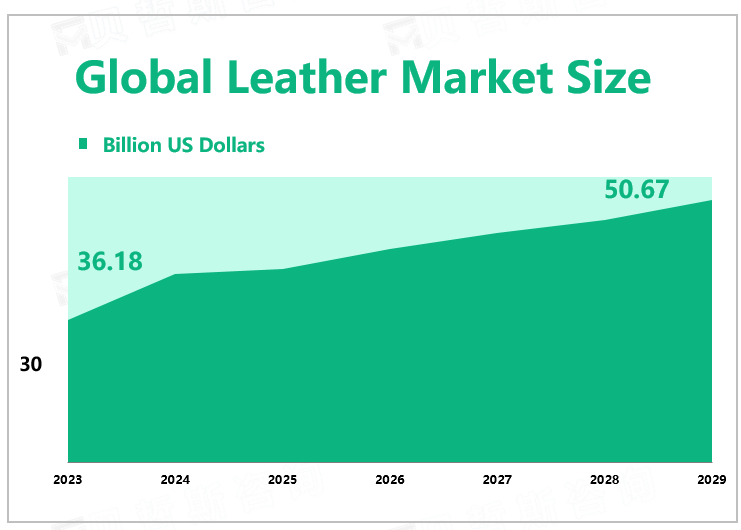Global Leather Market Overview
According to Global Market Monitor, the global leather market size will reach $36.18 billion in 2024 and is expected to grow to $50.67 billion by 2029.
Leather is a durable and flexible material created by tanning animal rawhides and skins. The most common raw material is cattle hide. It can be produced at manufacturing scales ranging from artisan to modern industrial scale.
Growing Downstream Demand
The demand for leather products continues to increase, and as a raw material, the size of the leather market is also stimulated and expanding. The increasing demand for downstream provides an opportunity for the leather market.Animal Leather resources are limited, expensive, and heavily polluted during processing. The artificial leather processing process is not limited by time and raw materials, the product uniformity is good, and it is easy to cut and process. It is a good material to replace Animal Leather.

Religious Sensitivity
In countries with large populations, many Animal Leathers are restricted for religious reasons. For example, Muslims cannot buy pigskin, while Hindus avoid using cats to adhere to religious obedience and respect. Many vegetarian Hindus do not use any leather. This taboo has a certain impact on the Animal Leather market, and suppliers should promote the market according to the characteristics of the region.Animal rights activists often protest animal leather for human clothing. This has a little limiting effect on the development of the leather market and its application in downstream markets.
As people's spending money has gone up, the demand for luxury goods has also gone up. These goods often symbolize a sense of accomplishment within individuals, giving them higher self-esteem. Europeans and North Americans are known to spend most on luxury goods, owing to their higher household incomes. An upward thrust can be seen in this matter in the Asian region as well. Leather goods form a major part of luxury goods. Luxury leather products include exclusive handbags, accessories, and shoes.
The increasing fashion consciousness, rising disposable incomes, and increasing demand for attractive bags drive the sales of luggage and leather goods in the region. Moreover, the growing interest in travel and unique experiences among consumers is boosting the demand for leather goods, such as luggage bags, especially in the luxury segment, as consumers increasingly look for high-quality items. Furthermore, with the strong presence of fashion-driven countries such as France and Italy, the region remains the market's largest consumer. Based on China's population and economic growth, the demand for leather products in the Chinese market continues to expand. The increase in consumer spending in China has led to an increase in demand for leather products, especially in footwear and bags. The choice of consumers of most Chinese consumers is not restricted by religion and other reasons, which provides an opportunity for the development of the leather market.
|
By Type |
Artificial Leather |
|
Animal Leather |
|
|
The artificial leather segment contributes the largest share. |
|
|
By Application |
Clothing |
|
Furnishing |
|
|
Automotive |
|
|
Bags |
|
|
Others |
|
|
The footwear segment occupied the biggest share. |
We provide more professional and intelligent market reports to complement your business decisions.